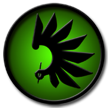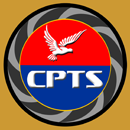Rifle 1: Up Drill
Overview:When training with the rifle, up drill is the most important drill you can do. As with any of the other firing tables, this drill can be performed according to the shooter's ability. The performance steps are:
1. The trigger finger moves into the trigger well and establishes its natural resting position on the trigger.
2. The safety is manipulated to "Fire."
3. The rifle is rotated up, using the toe of the butt and its position on the shoulder as a hinge point, giving a good "stock weld."
4. The sights or optical reticle are/is aligned on target.
5. The shot is allowed to break and recovery begins.
If the decision to fire is made at the low ready, all of these steps need to happen in one fluid motion. Here is where safety manipulation, trigger control and timing are learned. This is also where acquisition of the sights, sight alignment and sight picture are trained into the subconscious level. It takes a large number of repetitions to make this skill automatic.
The key is to start slow. Concentrate on one aspect of the drill at a time. In performing this drill don't get discouraged if your shot group is not as tight as you would like, it will tighten up as you become more proficient.
Work for a slow smooth presentation to target, checking all the blocks, on the way to firing the round. When your presentation and firing become comfortable and your shot group tightens up, then you work on picking up the pace of the drill.
Another item of note is "holds." Based upon the relationship between the sights or optic, you will find that when firing at distance closer than your primary zero range your point of impact will be lower than your point of aim.
The correction for this difference is "holding." You will need to adjust your point of aim a little higher than your intended point of impact. This hold will vary as the distance to target changes.
Experience is the best instructor for this. Practice at different ranges to find the various holds you need up to your zero distance. Of course, for simple targets this is not an issue. But if the target is complex or small, then knowing your hold becomes a very big issue.
Instructions to Shooters:
1. Once out on the firing line you will be instructed to load, press check and holster the pistol. (If used)
2. After the pistol is in the holster, load the rifle and assume a relaxed Low Ready position.
3. All engagements are single round engagements.
4. All shots will be fired on the command of “UP.”
5. On the command of “UP,” the trigger finger finds its position on the trigger, "Fire" is selected, the rifle is raised into position, the sight picture is acquired and the shot is fired.
6. After you fire, keep the trigger pressed to the rear and regain your sight picture.
7. Once you have re-established your sight picture slowly let the trigger move forward and feel the trigger reset.
8. After you have felt the reset, scan left and right of your target.
9. After scanning, remove your finger from the trigger, select "Safe," perform a condition check by looking at the ejection port ensuring that the bolt is forward and there are no malfunctions.
10. After you have performed the condition check return to the Low Ready and prepare to continue the drill.
11. When you reach the end of the magazine immediately perform either a transition to pistol and fire a controlled pair, or perform an emergency magazine change. This will be determined by your Range Master / Coach, based upon whether you are using both rifles and pistols.
12. You will be told when to buddy clear your weapons after all shooters have finished the exercise.
Range Master's Call:
Once the shooters are on the line and the line is “hot,” start calling the drill. Be sure to keep the pace slow. Give the shooters time to make good shots and follow the drill. Start the drill off by calling the steps. If you are shooting alone, you can also record the call of the drill and play it back on headphones while you are on the range.READY
UP (shooters fire when ready, but have them hold the position until you call the next step)
SIGHT PICTURE
RESET
SCAN
SAFE
CONDITION CHECK
LOW READY
Repeat until the table is complete. You may decide that the full call is not necessary at some point in the drill and allow the shooters to perform the drill at their own pace as long as you control the rate of fire. Example:
READY
UP (shooters fire, acquire second sight picture, reset trigger, scan, safe, condition check and return to the Low Ready on their own. Once the entire firing line is ready continue the drill.)
Common Mistakes:
Mistakes are noted in order of importance.1. Safety Manipulation: If practiced consciously enough times, safety manipulation will not be an issue. Rolling around with a "hot" rifle is never a good idea. It may be difficult to break this bad habit. Insure that the safety is manipulated for each iteration.
2. Condition Check: If shooters are unfamiliar with the AR Rifle, they may not realize that the bolt has locked to the rear or that a malfunction exists. A condition check after returning to safe will eliminate embarrassment.
3. Stance: Combat situations not withstanding, we are going for perfect form on the range. Shooters should be square to the target, not in a hunting stance. Weight should be over the balls of the feet to minimize the effects of recoil. Look for that "exposed" chicken wing elbow sticking out to the side of the rifle.
Drills & Skills
Training
If you're a writer and you need a reference page, check out TactQuill.com.




